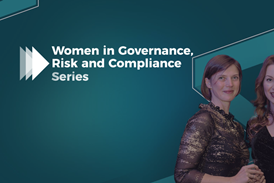
G(P)RC - How GRC Drives Performance in Banking & Finance
September 15th, 15:30 - 17:00 BST + On-Demand
Headline Sponsor
(September 2022)

Corporater
We are innovators on a mission to empower medium and large organizations worldwide with best-in-class software solutions for governance, performance, risk and compliance. We use our gains to make social impact.
Our Mission
Empower medium and large organizations to manage their business on a business management platform that adapts to their unique business model. Use our gains to make social impact.
Our Vision
Redefine how business applications are built and used.
The GRC Red Flags Series with Michael Rasmussen:
G(P)RC - How GRC Drives Performance in Banking & Finance
Governance, risk management, and compliance … GRC … too many organizations approach it from a bottom-up exercise instead of a top-down strategic tool to drive what OCEG calls Principled Performance. However, properly understood, GRC is about performance of the organization.
The official definition of GRC, found in the OCEG GRC Capability Model, is that GRC “is a capability to reliably achieve objectives [GOVERNANCE], address uncertainty [RISK MANAGEMENT], and act with integrity [COMPLIANCE].
- Governance sets direction and strategy for the organization to reliably achieve objectives. Governance sets the context for risk management, without context risk management fails.
- Risk management seeks to manage and understand uncertainty by identification, assessment, and monitoring of risk within context to act on risk through acceptance, avoidance, mitigation, or transfer.
- Compliance aims to see that the organization acts with integrity in fulfilling its regulatory, contractual, and self-imposed obligations and values. Compliance follows through on risk treatment plans to assure that risk is being managed within limits and controls are in place and functioning.
Using this definition, GRC is an enabler of performance of the organization as it tries to achieve (or exceed) its objectives. This is particularly true for todays banking and finance organization.
The modern financial services firm is in a world of navigating chaos. Continuously evolving regulations and obligations, a dynamic and interconnected external risk environment, and a complex and changing internal business environment (e.g., strategy, processes, operations, employees, technology, and business partners. Financial services organizations need to leverage GRC from a top-down approach to make GRC an enabler of performance in the midst of chaos.
This episode of the GRC Red Flag Series will look at the interconnectedness of risk and objectives on the financial services organization driving the demand for a 360° contextual awareness of GRC in context of performance. Financial services organizations need to see the intricate relationships of objectives and risks.
Register for G(P)RC - How GRC Drives Performance in Banking & Finance
What to expect by joining
The GRC Red Flag Series: G(P)RC - How GRC Drives Performance in Banking & Finance
The GRC Red Flag series will identify and debate the current & future critical risks and regulatory changes that can impact businesses.

News Alerts
30 Minutes

Fireside Chat
30 Minutes








